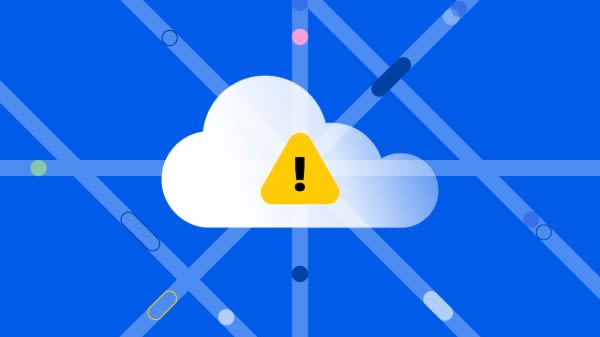Introduction
At 7am on a random Friday in July 2024, screens around the globe flickered and froze. Airports halted departures. Hospitals delayed surgeries. Shops went cashless as tills went silent. The cause was not a cyberattack or a storm, but a single software update from CrowdStrike that went wrong. Millions of Windows machines entered reboot loops, triggering one of the most significant global IT disruptions to date.
A year later, cracks in digital infrastructure widened. In October 2025, Amazon Web Services (AWS) experienced a major disruption in its USEAST1 region, caused by a DNS fault affecting core services. Communication platforms froze, financial systems went offline, and logistics networks came to a standstill. Weeks later, Microsoft Azure suffered a separate global outage after a misconfigured routing update disrupted applications across multiple regions.
For businesses and governments, the impact was more than inconvenient. It was a wake-up call: a cloud-dependent world, long marketed as seamless and invincible, had a clear Achilles’ heel - reliance on a handful of providers.
When Convenience Turns Fragile
The cloud was meant to democratise computing power, but instead, has concentrated it. Over 70 per cent of workloads now sit on Amazon, Microsoft, or Google servers. Their scale is vast; their stability, it turns out, is not.
The CrowdStrike outage alone affected millions of devices and caused billions in lost productivity. The AWS and Azure failures added further disruption. From airports to banks, these incidents revealed a stark truth: efficiency is not a substitute for resilience.
Concentrating critical infrastructure in the hands of a few providers creates vulnerability. A single failure can ripple across industries and regions, shutting down systems that businesses, hospitals and governments rely on daily. The appeal of a single provider is obvious - one contract, one dashboard, one ecosystem - but that convenience masks a dangerous truth: when the provider falters, there is no backup sky.
Counting the Cost: Money, Data and Trust
Outages affect businesses in three ways: lost productivity, reputational harm, and regulatory exposure. Each hour of cloud downtime can cost enterprises hundreds of thousands of pounds. Yet the wider damage is harder to measure.
Customers lose faith in brands that cannot stay online. Hospitals and airlines, where continuity may be life-critical, face intense scrutiny. Governments which are increasingly reliant on public cloud infrastructure, have had to reassess their cybersecurity strategies. For smaller firms, the impact can be existential, with entire e-commerce sites disappearing and operations grinding to a halt.
Legal Team Involvement
The outages drew in lawyers across multiple disciplines to manage liability, compliance, and risk.
• Commercial and Contract Lawyers reviewed service agreements, liability clauses, and compensation claims.
• Data Protection and Privacy Lawyers assessed obligations under data protection regulations.
• Regulatory and Compliance Lawyers advised on engagement with government oversight bodies.
• Competition and Antitrust Lawyers examined market dominance and the risks of vendor lock-in.
• Technology, IP, and Cybersecurity Lawyers protected proprietary systems and advised on licensing and incident response.
• Litigation and Dispute Resolution Lawyers prepared claims arising from downtime.
• Employment Lawyers advised on payroll, HR, and labour obligations disrupted by outages.
• Insurance Lawyers interpreted business interruption and cyber coverage.
• Public and Government Lawyers guided agencies on procurement, continuity, and accountability.
• Corporate and Transactional Lawyers assessed contract, M&A, and financing risks linked to single-cloud dependence.
Together, these teams transformed technological failure into a structured legal response, enabling organisations, regulators, and providers to prepare for future disruptions.
Future Outlook
Experts agree that the solution is not abandoning the cloud but rethinking it. The next frontier is multi-cloud, distributing workloads across multiple providers rather than relying on a single one.
Financial institutions are experimenting with dual-cloud setups to meet regulatory requirements. Tech firms are investing in cloud-agnostic tools to allow workloads to move seamlessly between AWS, Azure, and Google Cloud. Governments are reviewing procurement policies, mandating redundancy and localised storage. Legal teams are drafting cross-cloud continuity clauses to clarify liability and strengthen disaster-recovery obligations.
The outages of 2024 and 2025 demonstrate that the cloud’s future will be defined not by ownership, but by who can keep it running when everything else falls apart.
The cloud was never meant to be a single sky. It was meant to be horizon-wide, shared, and resilient enough to weather any storm.
